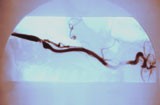Play all audios:
Access through your institution Buy or subscribe LXRs were first identified in the liver, and they are members of the nuclear hormone receptor superfamily of transcription factors. They bind
and are activated by cholesterol, whereupon they are involved in regulating the expression of genes involved in sterol absorption and transport, and several genes involved in cholesterol
and fatty-acid metabolism. However, LXRs are also expressed in non-hepatic cells, and are involved in regulating the expression of ATP-binding cassette 1 (ABC1) and apolipoprotein E;
proteins that have important functions in promoting the transfer of cholesterol to receptors, such as high-density lipoprotein (HDL), in a process known as reverse cholesterol transport. The
importance of this process of reverse transport can be seen in the rare genetic condition Tangier disease, in which patients do not express ABC1. The patients have reduced HDL levels; they
accumulate cholesterol in tissues and have an increased risk of atherosclerosis. As LXRs are expressed on macrophages — a cell type that is involved in the formation of atherosclerotic
plaques — the authors sought to identify a direct link between LXR signalling from macrophages and the pathogenesis of cardiovascular disease. To investigate the role of LXR expression on
macrophages in atherosclerosis, macrophage-selective knockout mice were created. The use of selective knockouts is a useful technique to investigate a cell-specific contribution without
interference of the loss of function in other tissues. Bone marrow from Lxr-deficient mice was transferred to lethally irradiated mouse models of atherosclerosis. The recipient mice showed
selective loss of LXR activity in bone-marrow-derived cells, increased cholesterol accumulation and accelerated atherosclerosis. These results show a direct link between LXR activity and
cardiovascular disease. This is a preview of subscription content, access via your institution ACCESS OPTIONS Access through your institution Subscribe to this journal Receive 12 print
issues and online access $209.00 per year only $17.42 per issue Learn more Buy this article * Purchase on SpringerLink * Instant access to full article PDF Buy now Prices may be subject to
local taxes which are calculated during checkout ADDITIONAL ACCESS OPTIONS: * Log in * Learn about institutional subscriptions * Read our FAQs * Contact customer support REFERENCES ORIGINAL
RESEARCH PAPER * Tangirala, R. K. et al. Identification of macrophage liver X receptors as inhibitors of atherosclerosis. _Proc. Natl Acad. Sci. USA_ 99, 11896–11901 (2002) Article CAS
Google Scholar FURTHER READING * Cascieri, M. A. The potential for novel anti-inflammatory therapies for coronary artery disease. _Nature Rev. Drug Discov._ 1, 111–121 (2002) Article
Google Scholar * Joseph, S. B. et al. Synthetic LXR ligand inhibits the development of atherosclerosis in mice. _Proc. Natl Acad. Sci. USA_ 99, 7604–7609 (2002) Article CAS Google Scholar
Download references Authors * Melanie Brazil View author publications You can also search for this author inPubMed Google Scholar RELATED LINKS RELATED LINKS WEB SITES Peter
Tontonoz's laboratory RIGHTS AND PERMISSIONS Reprints and permissions ABOUT THIS ARTICLE CITE THIS ARTICLE Brazil, M. Macrophage LXRs inhibit atherosclerosis. _Nat Rev Drug Discov_ 1,
840 (2002). https://doi.org/10.1038/nrd946 Download citation * Issue Date: 01 November 2002 * DOI: https://doi.org/10.1038/nrd946 SHARE THIS ARTICLE Anyone you share the following link with
will be able to read this content: Get shareable link Sorry, a shareable link is not currently available for this article. Copy to clipboard Provided by the Springer Nature SharedIt
content-sharing initiative

